Think of denim and what name do you come up with? Levi Strauss? Wrangler? Diesel? The name mo hom is unlikely to be one that springs immediately to mind, but if you spend any extended time in Thailand you will notice local people wearing this Thai version of denim which is lighter in weight and better suited to the tropical climate. The words mo hom come from the northern Thai dialect with mo meaning pot and hom referring to the hom plant (also known as the indigo plant) which produces the distinctive deep blue colour of the dye. Just as the original customers of Levi Strauss were manual workers and farmers, mo hom fabric found favour in Thailand with a similar clientèle. And if San Francisco, California, is associated with Levis Strauss and blue jeans, then Phrae in northern Thailand is synonymous with blue mo hom shirts.
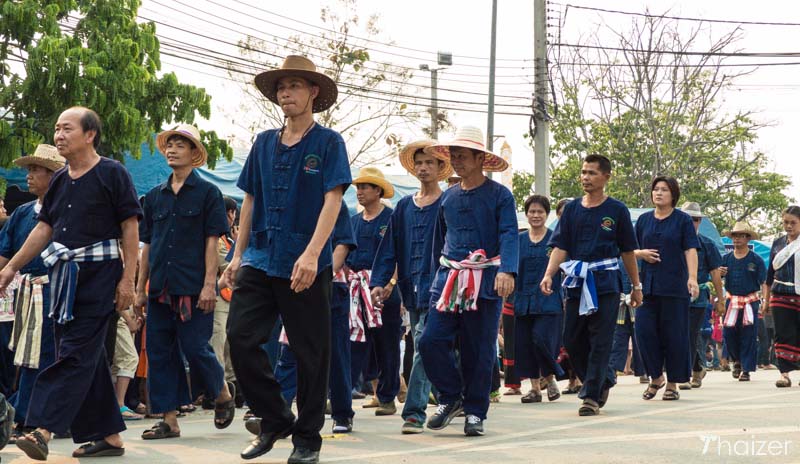 wearing mo hom shirts and trousers at a street parade in Phrae
wearing mo hom shirts and trousers at a street parade in Phrae
Approximately 4kms north of the city of Phrae lies the village of Ban Thung Hong and the community of artisans who produce the best-known mo hom products in Thailand. If you are travelling by road from Chiang Rai or Nan en route to Phrae you will know when you have arrived at Ban Thung Hong by the rows of indigo-blue shirts hanging on rails and dangling from shop-fronts all along the main road. This is the traditional home of mo hom and there is a good chance that if you see somebody wearing a mo hom shirt anywhere in Thailand then it has been made here.
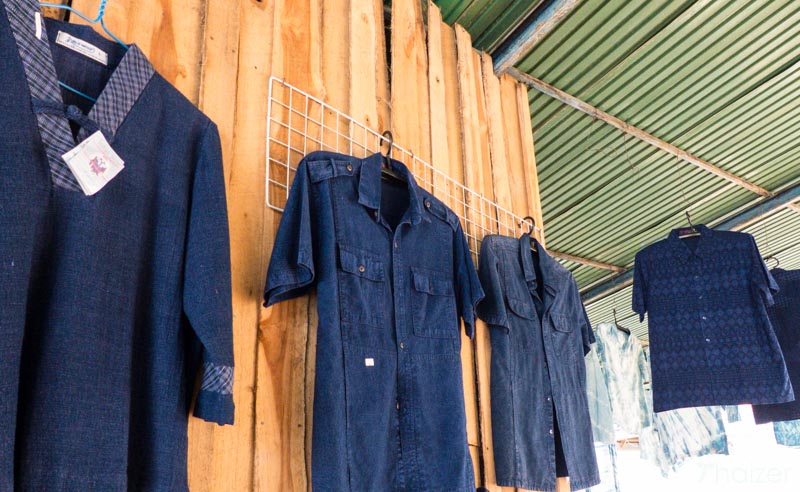
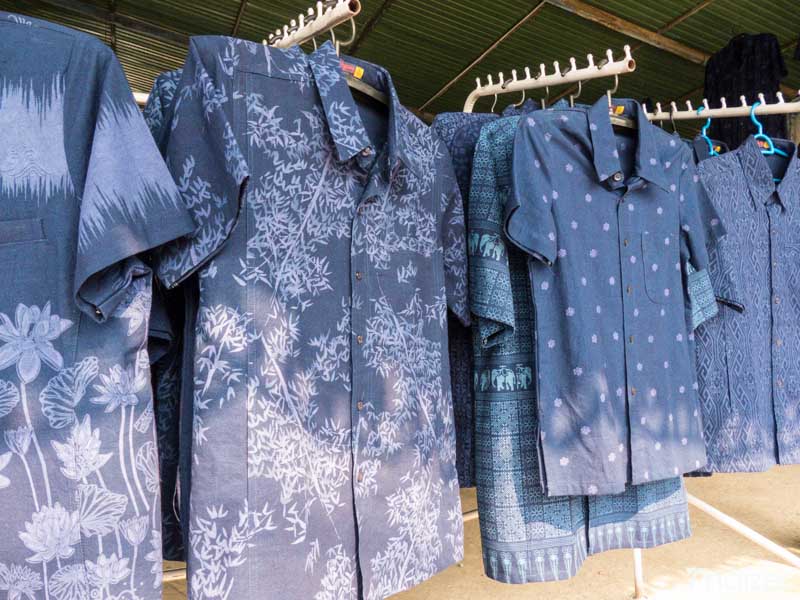
The craft of producing mo hom is a speciality of the Thai Phuan people whose ancestors came from the Phuan kingdom in Laos where the women were renowned for their expertise in the various stages involved in making garments including spinning, weaving, dyeing and embroidery. That knowledge has been passed down from generation to generation and the mo hom fabric and shirts have become a proud symbol of Phrae. Under Thailand’s OTOP (One Tambon One Product) scheme, Thung Hong village has officially been recognized as a ‘champion of handicrafts’. Although it’s the indigo collarless shirts, known as seua mo hom, which are the most famous symbol of the village, the workers there also make a range of products in different shades of blue including scarves, shawls and bags. Believe it or not, the lady in the photos below working away at her weaving loom and selling the bags she helps to make is 86 years old.
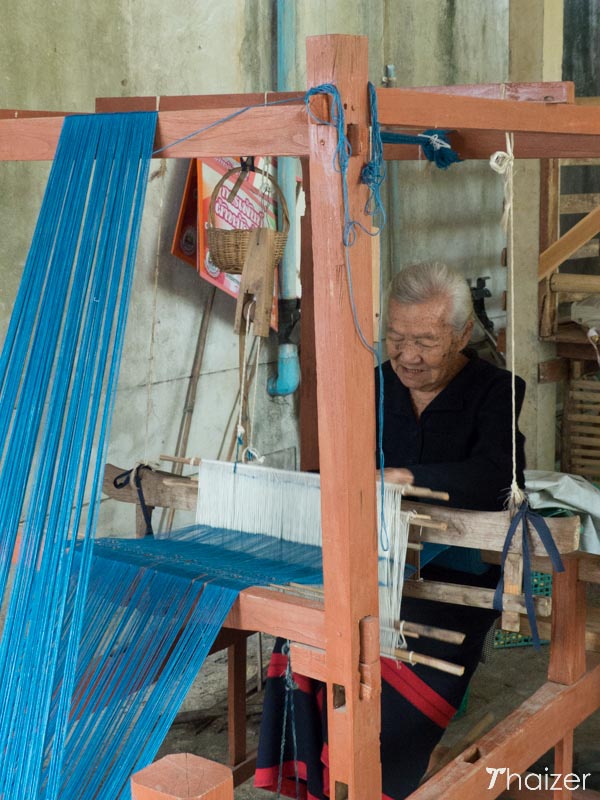
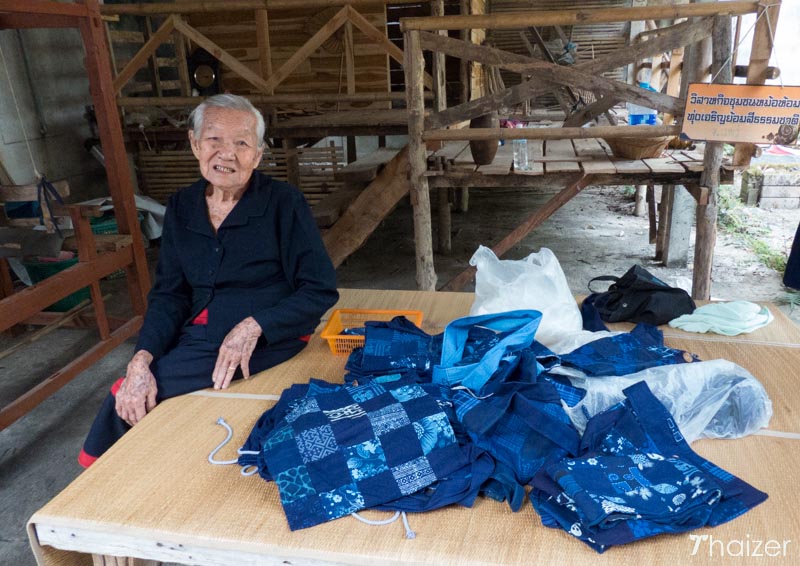
The indigo plant is cut and branches and leaves are tied before being immersed in water for 2 nights. Waste is then removed from the mix before adding quicklime and beating the liquid by hand to a foam. A cloth is used to filter any sediment and the remaining indigo paste can then be stored and used for dyeing throughout the year.
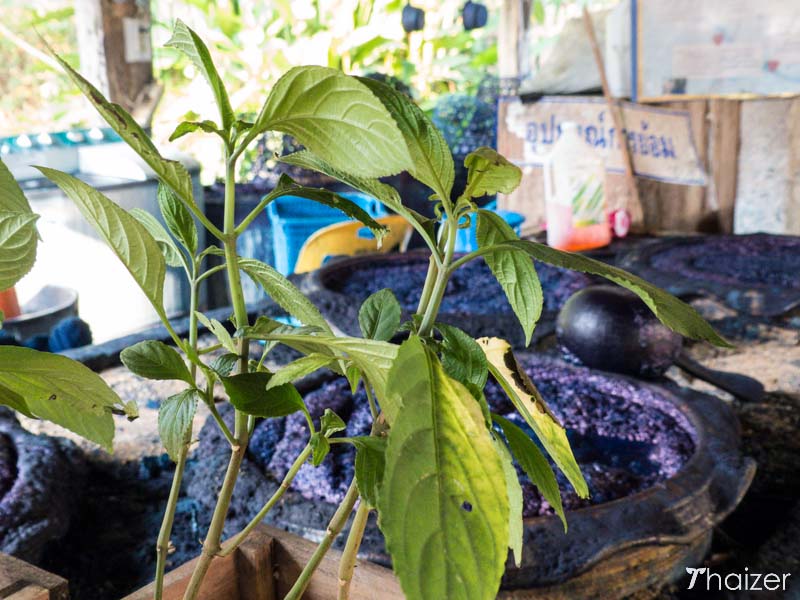
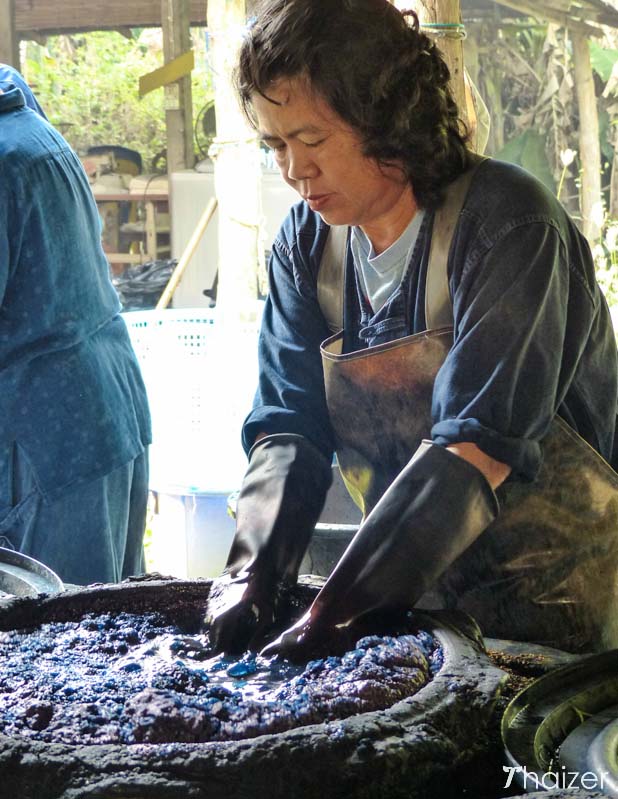
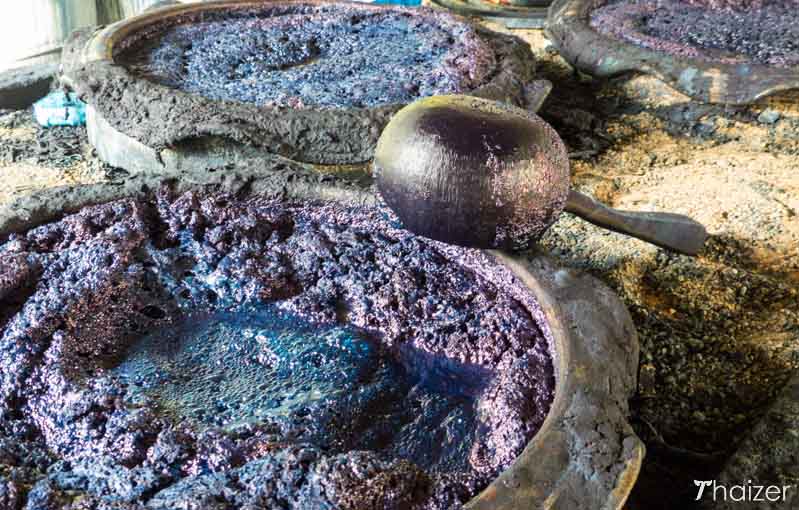
When the fabric or clothes are ready to be dyed, the indigo paste is mixed with quicklime and placed into a pot with the fabric being allowed to soak in the mixture for 2 nights. The cloth is then dried although the dyeing process is sometimes repeated 3 or 4 times to achieve the desired colour. The cloth then has to be washed before being ready for sale. The colour and texture of mo hom fabric improves after washing. Mo hom garments will bleed for the first 4 or 5 washes and should be washed separately, but after those initial washes the colour is fixed and the fabric becomes softer and more luxurious.
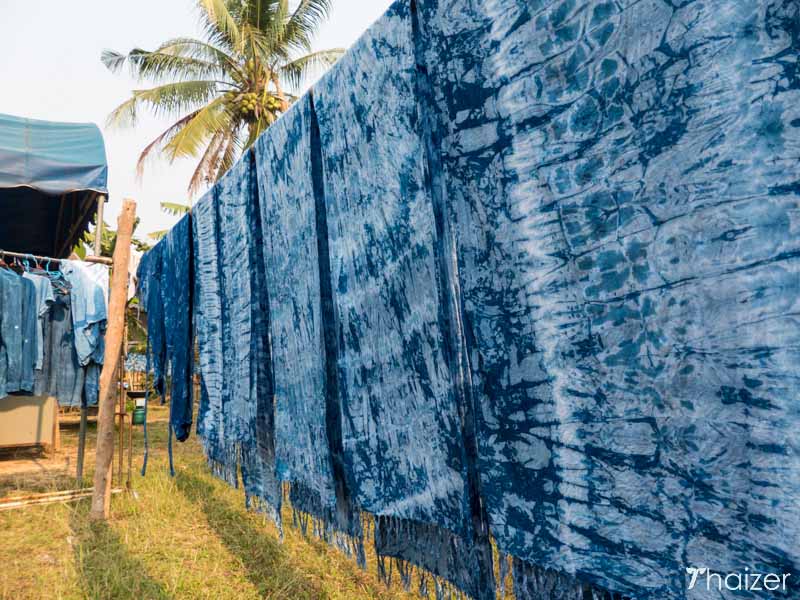
If you’re looking for an authentic souvenir of Thailand, take a look at mo hom products. They can be found at various outlets and markets in Thailand, but if you visit Phrae you can buy direct from the artisans at Ban Thung Hong and also take a look at the production process while you are there. The village is located 4kms north of Phrae city on the main Yantrakitkosol Road (Highway 101). Shared songthaews depart from Yantrakitkosol Road (south of the Paradorn Hotel) or you can negotiate a price for a songthaew to take you on the short trip to Ban Thung Hong and wait for you until you wish to return to Phrae city. Motorbike taxis from Phrae bus station are another option. For more information contact the helpful Tourism Authority of Thailand office in Phrae:
address: 2 Ban Mai, Amphoe Muang, Phrae
email: [email protected]
tel: +66 54 521 118
facebook: TAT Phrae